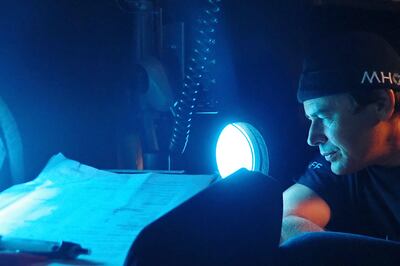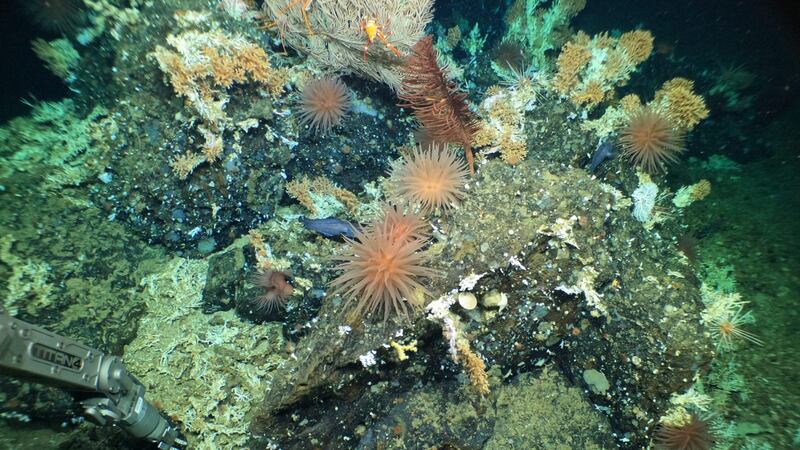One of the best travel destinations for scuba diving and the world's most studied archipelago is not finished revealing its deep secrets.
Scientists on an expedition in the Galapagos Islands in Ecuador have discovered a thriving coral reef deep below the ocean surface.
The first to be documented inside the archipelago's protected area, the reef is teeming with marine life including pink octopus, squat lobsters, sharks, batfish, rays and more.
Lying at depths of 400 to 600 metres below the surface, it was discovered during an almost month-long expedition called Galapagos Deep 2023 in which scientists explored the protected ocean area in the volcanic islands 1,000km off the coast of Ecuador.
“This is encouraging news. It reaffirms our determination to establish new marine protected areas in Ecuador and to continue promoting the creation of a regional marine protected area in the Eastern Tropical Pacific,” said Antonio Dávalos, Ecuador’s Minister of Environment.
Sailing on research vessel Atlantis, 21 international scientists are using Alvin, one of the world’s first deep-ocean submersibles, to gather data. The vessel can capture high-resolution footage, produce maps and perform photographic surveys on dives of up to 10 hours and at depths of 6,500 metres. It also has two robotic arms, which scientists can use to collect samples.
Cresting the ridge of a submerged volcano, the newly discovered reef stretches over 2km and has given scientists hope that there are more reefs to be explored in what is already one of the world's leading areas of biodiversity.
Undiscovered coral reef gives hope despite climate crisis
Approximately 50-60 per cent of the reef is live, demonstrating that healthy reefs can still thrive at a time when coral is in crisis due to the climate emergency that is causing rising sea temperatures.
“The reefs we’ve found in the last few days have 50-60 per cent live coral in many areas, which is very rare indeed,” said Michelle Taylor, co-lead of the expedition and chairwoman of the Deep Sea Society. "The reef is pristine and teeming with life … This newly discovered reef is potentially an area of global significance — a canary in the mine for other reefs globally — a site we can monitor over time to see how a pristine habitat evolves with our current climate crisis."

Before this discovery, scientists believed that Wellington Reef off Darwin Island was the biggest coral reef in the Galapagos Islands to have survived the impact of El Nino in 1982, the most devastating of the century.
During this equatorial weather phenomenon, strong winds and warm sea-surface temperatures gave rise to heavy rain. It wiped out most of the archipelago's marine iguanas, reduced populations of other creatures and had a huge effect on the region's coral systems, which were bleached from high ocean temperatures.
The discovery of the new reef has led scientists to hypothesise that deep water coral communities could have persisted for centuries in the depths of the Galapagos Marine Reserve.
“The captivating thing about these reefs is that they are very old and essentially pristine, unlike those found in many other parts of the world’s oceans,” said Stuart Banks, senior marine researcher at the Charles Darwin Foundation in the Galapagos Islands.







